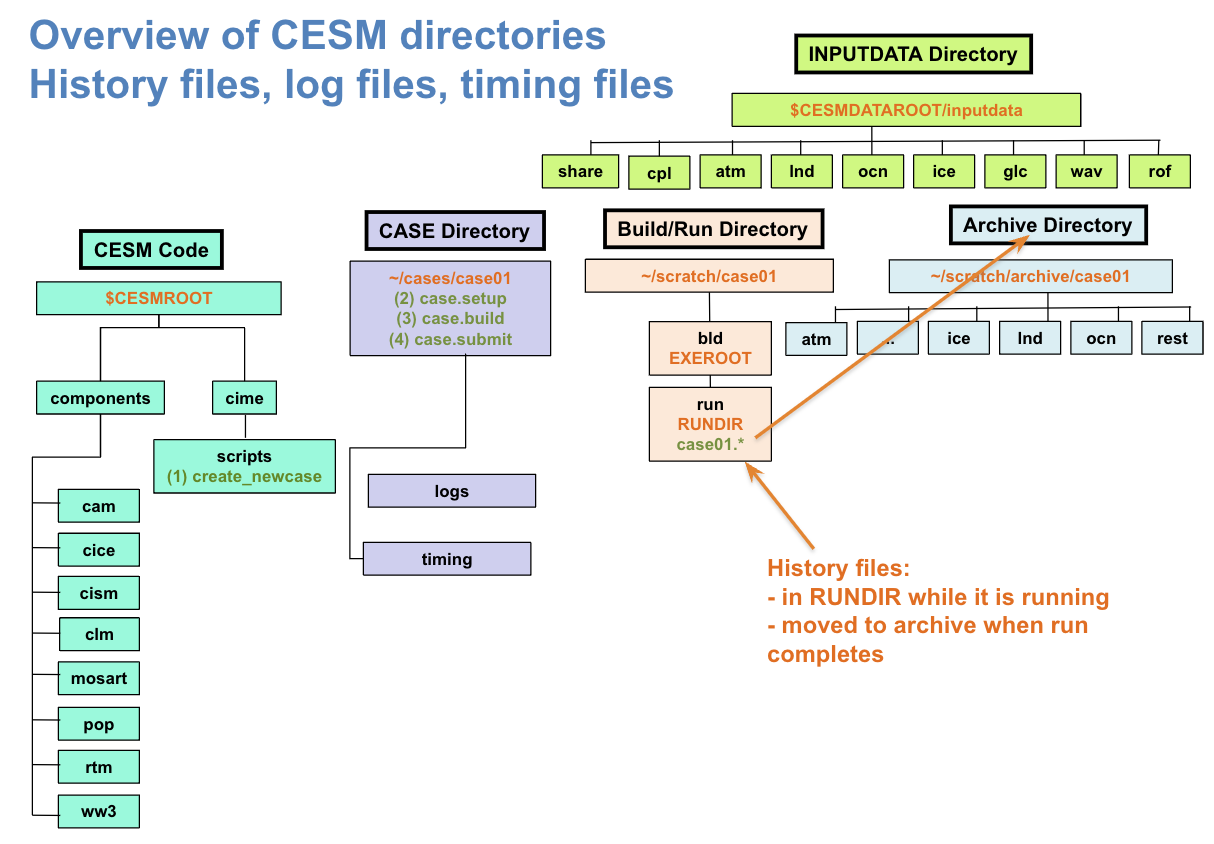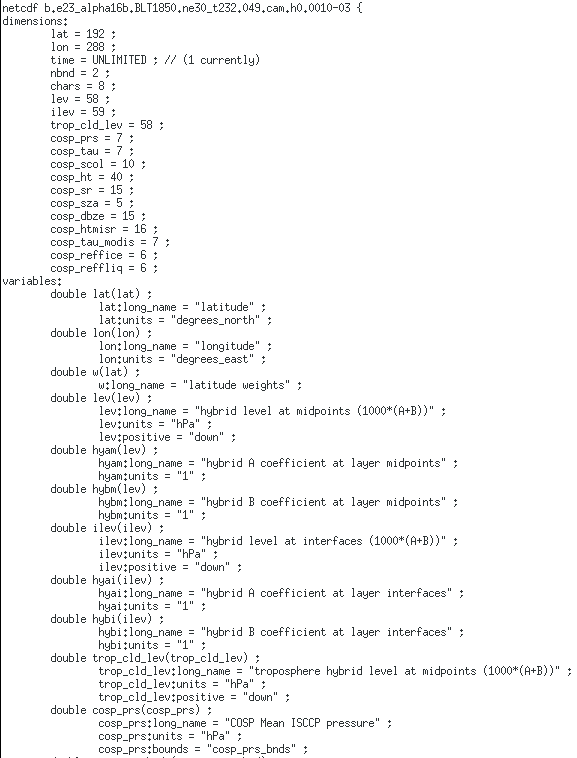CESM output#
While CESM is running, the history files that contain the output variables are located in the run directory. Once a segment of simulation has finished running, they are then archived in the archive directory (Fig. 1)
Figure 1: CESM structure and the location of the output
Each component can output a number of history files that contain different frequencies of data. The variables and frequencies that are output can be controlled by the CAM namelist (see Namelist section). The format of the output is netCDF files.
netcdf files#
NetCDF files are a flexible and efficient format that enables organized and standardized data storage for complex scientific datasets.
NetCDF files contain a header which provides a brief summary of the data in the file, such as variable names, dimensions, and other metadata.
The following command
ncdump -h file.nc
gives a quick view of the header of file.nc. There can be a lot of information in these files so you can also send the output to the more or less commands (see the linux overview) e.g.,
ncdump -h file.nc | more
Then you can press return or space to scroll through the output. This can give you a quick view of what’s in the output files and an example of the output from this command on a cam history file is shown in Figure 2.
Figure 2: An example of the output of the 
ncdump -h command.
A list of dimensions is seen followed by variables and associated metadata